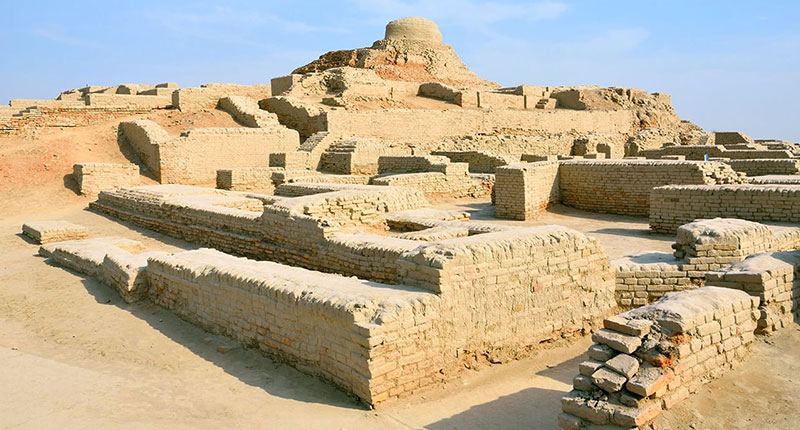
The ancient civilization that flourished along the Indus River in present-day Pakistan and northwest India is commonly known as the Indus Valley Civilization or the Harappan Civilization. This civilization, which was one of the earliest urban civilizations in the world, existed from around 3300 BCE to 1300 BCE. In this article, we will explore the rise and fall of the Indus Valley Civilization, the culture, society, and economy of the people who lived there, and the legacy they left behind.
The Indus Valley Civilization was discovered in the 1920s and 1930s by archaeologists in what is now Pakistan and northwest India. The civilization was contemporaneous with ancient Egypt and Mesopotamia and is considered one of the three earliest urban civilizations of the world. The civilization was known for its sophisticated urban planning, advanced drainage systems, and intricate trade networks.
Geographical Setting and Chronology
The Indus Valley Civilization was located in the northwest region of the Indian subcontinent, covering parts of present-day Pakistan and India. The civilization was situated in the fertile alluvial plains of the Indus River and its tributaries, which provided the necessary water and soil for agricultural activities. The civilization’s chronological span is divided into three periods: the Early Harappan Period (3300 BCE-2600 BCE), the Mature Harappan Period (2600 BCE-1900 BCE), and the Late Harappan Period (1900 BCE-1300 BCE).
The Rise of the Indus Valley Civilization
The rise of the Indus Valley Civilization can be attributed to a combination of factors, including the region’s favorable geographical setting, the development of agriculture, and the growth of trade networks. The civilization emerged during the Early Harappan Period when small villages began to emerge in the Indus Valley region. These villages gradually grew in size and complexity, leading to the development of the Mature Harappan Civilization.
Society and Culture
The society and culture of the Indus Valley Civilization were complex and sophisticated. The civilization was characterized by a hierarchical social structure, with a ruling elite at the top, followed by a middle class, and then the working class. The people of the Indus Valley Civilization were skilled in metallurgy, pottery, and weaving. They had a writing system that has yet to be fully deciphered and were known for their intricate artwork, including figurines and seals.
Economy
The economy of the Indus Valley Civilization was based on agriculture and trade. The people of the Indus Valley cultivated a variety of crops, including wheat, barley, and cotton. They also raised cattle, sheep, and goats. The civilization had a sophisticated trade network that extended to the Persian Gulf, Mesopotamia, and beyond. The Indus Valley Civilization was known for its advanced urban planning, including the creation of well-planned cities, streets, and buildings.
Decline and Legacy
The decline of the Indus Valley Civilization is still a matter of debate among historians and archaeologists. Some theories suggest that environmental factors such as climate change or floods may have contributed to the decline. Others suggest that the civilization declined due to internal factors such as social unrest or invasion by outsiders. Whatever the cause, the Indus Valley Civilization gradually declined and disappeared by around 1300 BCE. The civilization’s legacy can be seen in the modern-day Indian subcontinent, where many of its traditions and cultural practices have been passed down through the generations.
Conclusion
The Indus Valley Civilization was one of the earliest and most sophisticated urban civilizations in the world. Its rise and fall remain a topic of fascination for historians and archaeologists. The civilization’s legacy can be seen in the modern-day Indian subcontinent, where many of its traditions and cultural practices have been preserved and continue to be celebrated. From advanced urban planning and intricate trade networks to skilled craftsmanship and a complex social structure, the Indus Valley Civilization has left a lasting impact on the region and the world.
FAQs
1. What was the main religion of the Indus Valley Civilization?
- The religion of the Indus Valley Civilization is not fully understood due to the lack of decipherable written records. However, some artifacts suggest that they may have worshiped a mother goddess.
2. What was the Indus Valley Civilization’s writing system?
- The Indus Valley Civilization’s writing system was in the form of pictographs, which are yet to be fully deciphered.
3. What was the main mode of transportation in the Indus Valley Civilization?
- Boats and bullock carts were the main modes of transportation in the Indus Valley Civilization.
4. Did the Indus Valley Civilization have any enemies?
- The Indus Valley Civilization may have faced invasion from outsiders such as the Aryans, but the exact cause of its decline is still debated.
5. What are some of the lasting legacies of the Indus Valley Civilization?
- The Indus Valley Civilization’s lasting legacies include urban planning, metallurgy, pottery, and weaving techniques, as well as cultural practices that have been passed down through the generations.
